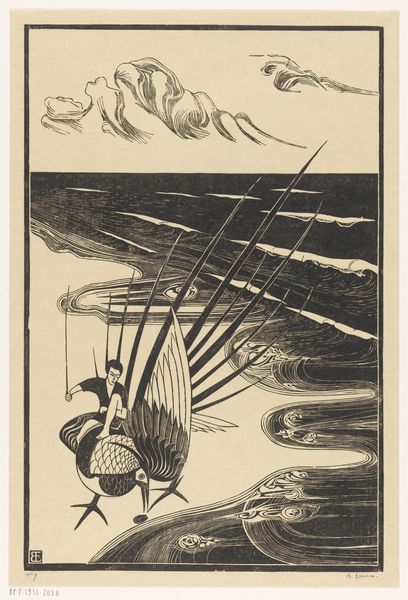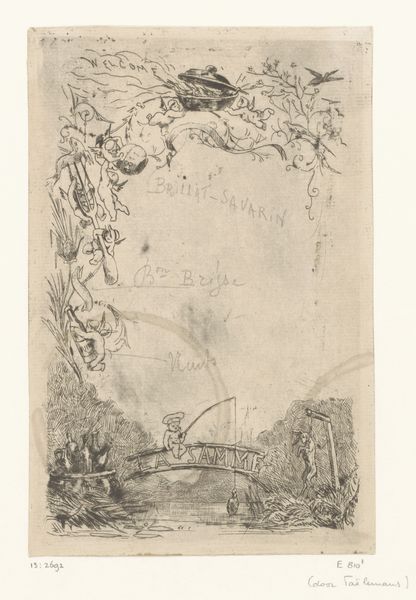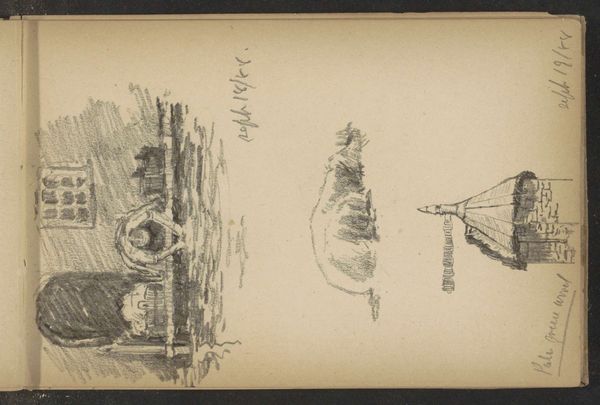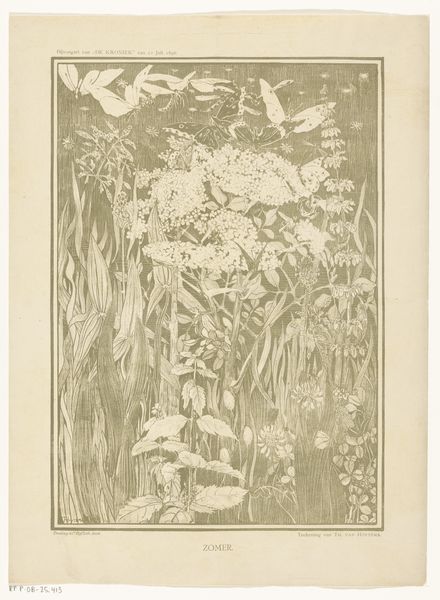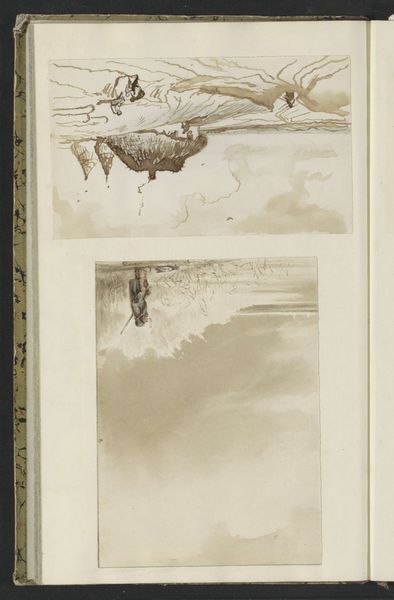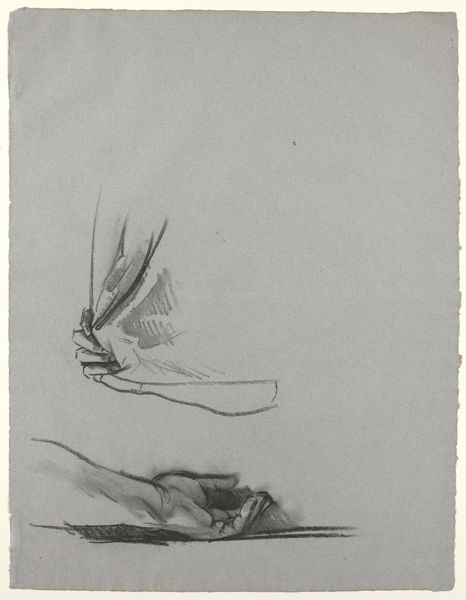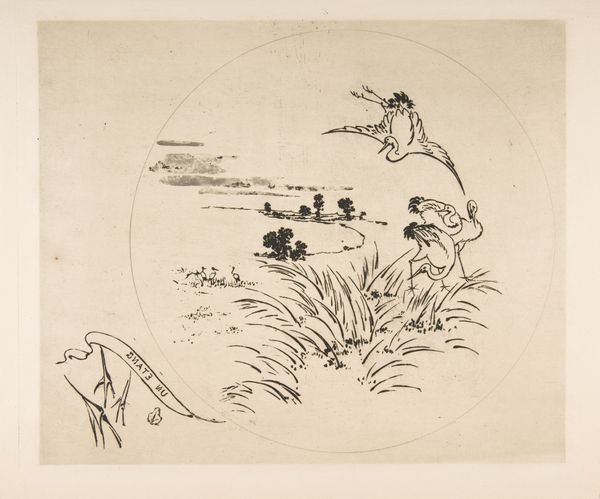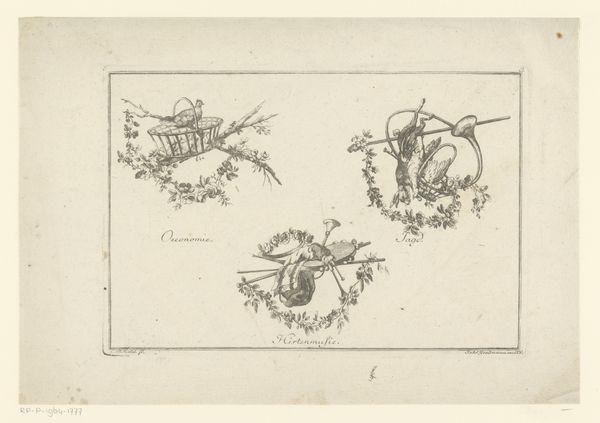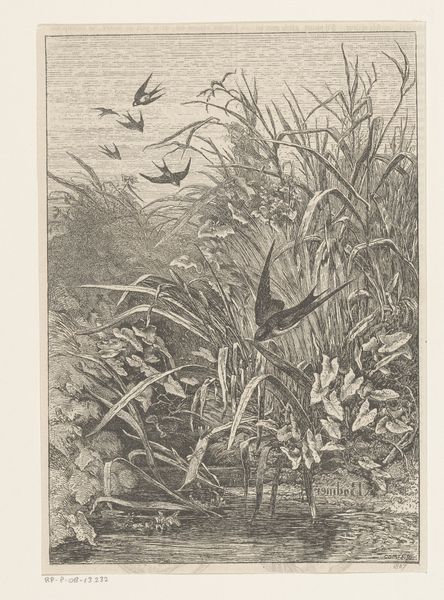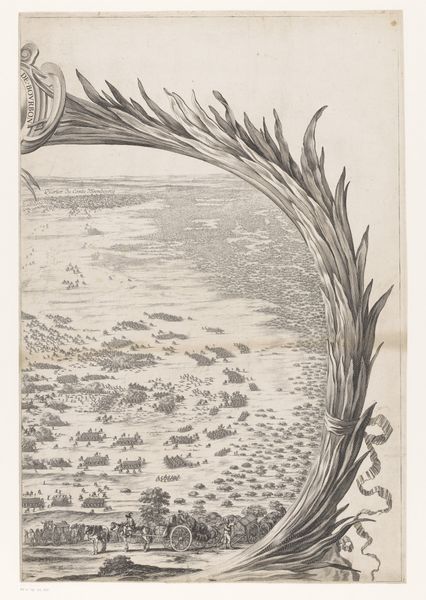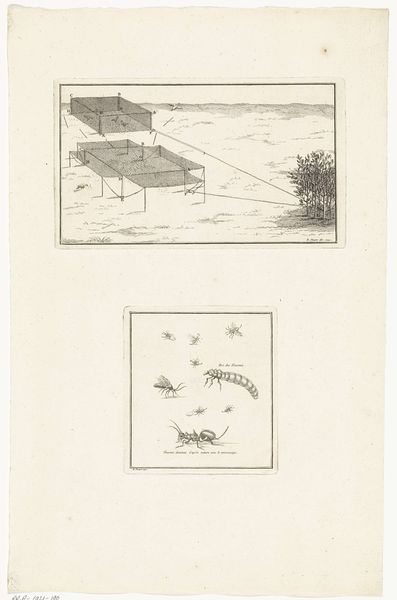
Dimensions: sheet: 11 11/16 x 7 5/8 in. (29.7 x 19.4 cm)
Copyright: Public Domain
Curator: Let's take a closer look at J. J. Grandville's "First Dream," a drawing and print created sometime between 1820 and 1847. It's currently housed here at the Metropolitan Museum of Art. Editor: The initial impression is undeniably surreal. It evokes a sense of anxiety, doesn't it? All those disembodied eyes staring out... there's a looming feeling of being watched. What's the process here? It has that fine graphic quality we've come to know from this era of popular illustration. Curator: It is a lithograph, likely produced for mass consumption. Note the precision and intricacy. Lithography allowed for a greater distribution of images to a broader public and also a way for artists to critique society without the same limitations inherent in painting or sculpture at the time. How interesting that the production process allows dreams to be available to all in this way! Editor: Absolutely. The imagery is thick with symbolism. The eyes, most obviously, but also the scales, swords, and crucifix. They create an allegorical landscape. What do you think Grandville intended to convey with these potent images? Curator: I see a strong indictment of justice and religion. The imbalance of the scales and placement of weaponry, near watchful eyes could signal a corrupt and unbalanced world view, potentially pointing to socio-political realities in France. Editor: Precisely! It reads as a moral landscape. The crucifix might not represent pure faith, but instead, dogma imposed from above, given its stark, imposing presence. What about the figure riding atop what appears to be some sort of reptile? Is there some connection with conquest and power at play? Curator: It's difficult to say definitively without delving deeply into the social and political context of 19th-century France, yet these allusions and themes related to social injustice were prevalent and a significant motivator for art and labor production in prints, given they could speak more easily to wider audiences. Editor: The visual vocabulary pulls from mythology and perhaps alchemy to shape a very personal and symbolic language to convey some inner terror and fear associated with life and control in society. Curator: Indeed. By exploring the materiality and production of Grandville's "First Dream," we uncover a complex intersection of personal anxieties and broader social critique. It's more than just an image—it's a reflection of the means and motives of image making and labor at the time. Editor: Yes, through deciphering Grandville’s rich symbols, we’ve uncovered how deeply ingrained the cultural anxieties were and how artist channeled it. Thank you.
Comments
No comments
Be the first to comment and join the conversation on the ultimate creative platform.
